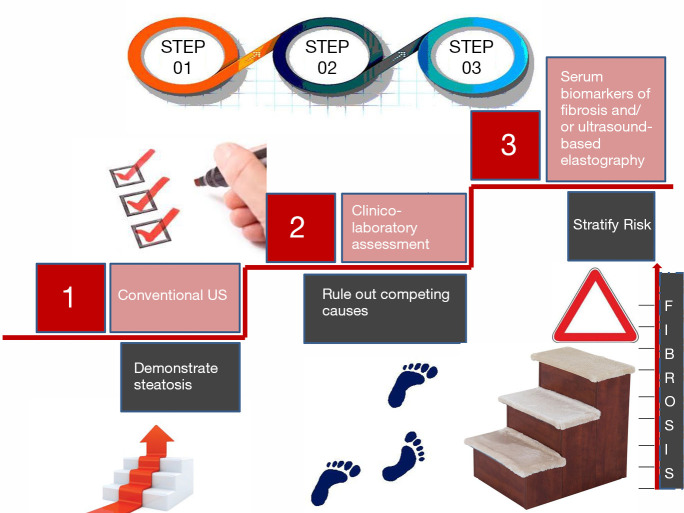Figure 1.
A three-step conceptualization of the diagnostic approach to NAFLD (4,6-10). In at risk individuals, who come to medical observation either through individual consultation or in the setting of screening campaigns, there are three steps to be taken sequentially. Step 1: conventional ultrasonography (US) plays a key role (10). Although, other laboratory tests may also be used to this end (6), US offers the additional advantage of ruling out focal liver disease. Step 2: clinical (e.g., careful collection of historical data through interviews with patients and relatives focusing on occult alcohol consumption) and laboratory assessment (exclusion of infection with hepatitis viruses, autoimmune liver disease, common endocrinopathies, genetic diseases involving the metabolism of heavy metals, rare metabolic disorders). Step 3: various techniques, including chemical and physical may help in identifying those individuals who, based on suspected advanced fibrosis/rapidly fibrosing liver disease need to be submitted to liver biopsy (4). The use of different methods is always guided by clinical judgement and necessarily influenced by the local availability of diagnostic techniques and resources to be allocated to the individual patient in a given clinical or research setting. NAFLD, non-alcoholic fatty liver disease.

